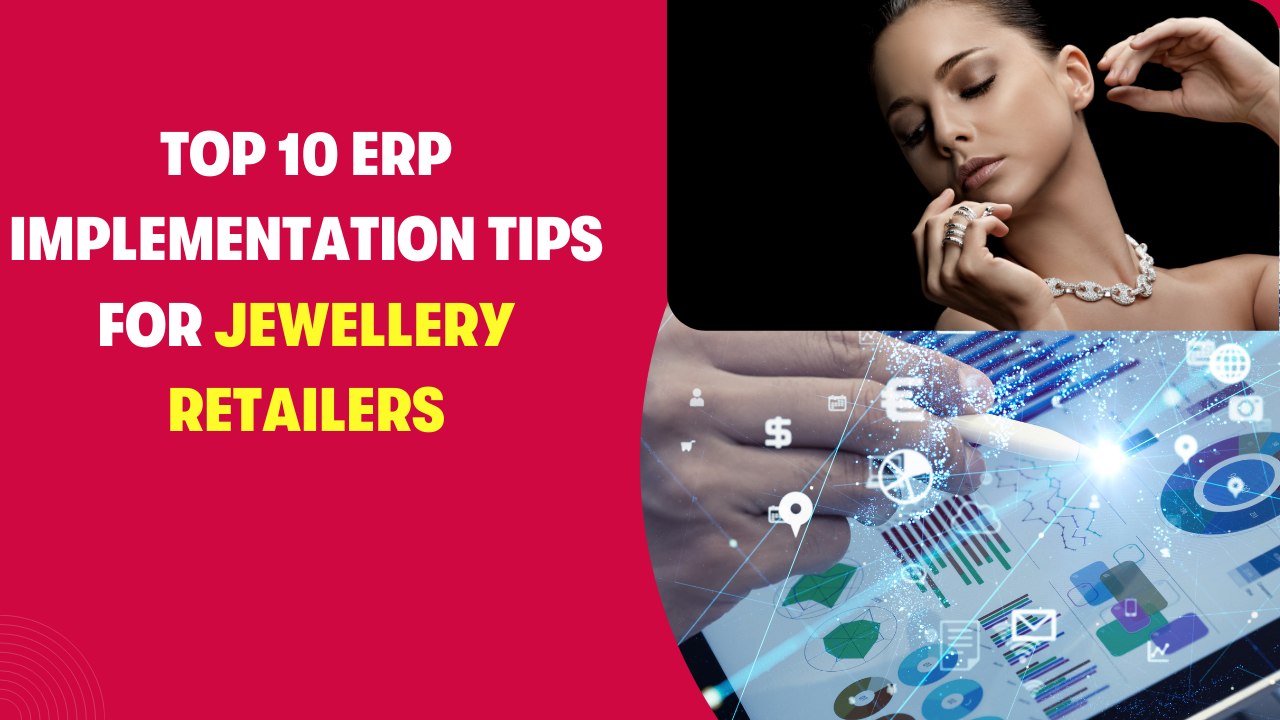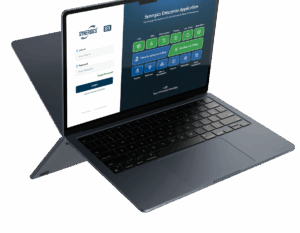Introduction:
In the ever-evolving landscape of the jewellery retail industry, the successful implementation of an Enterprise Resource Planning (ERP) system has become more critical than ever before. ERP solutions provide retailers with the tools and capabilities to manage various aspects of their business efficiently, from inventory and customer relations to financial operations. However, the path to a seamless ERP implementation is laden with challenges that require careful planning and execution. This article explores the top 10 ERP implementation tips for Jewellery software, offering valuable insights and guidance to ensure a smoother transition and a brighter future for your business.
Top 10 ERP Implementation Tips for Success
Implementing an Enterprise Resource Planning (ERP) system is a significant undertaking for any business, and it’s crucial to get it right. ERP solutions are designed to streamline operations, improve efficiency, and enhance decision-making. To ensure a smooth and successful ERP for Retail Jewellery Business, follow these top 10 tips, which include process insights and strategic considerations.
1. Define Your Objectives Clearly
Start your ERP implementation by establishing clear and well-defined objectives. What do you hope to achieve with the ERP system? Whether it’s improved inventory management, enhanced customer service, or better financial reporting, having clear goals is the foundation for success.
According to a report by Panorama Consulting Solutions, 58.6% of ERP implementations are over budget, and 55.9% take longer than expected. Setting clear objectives helps prevent scope creep and keeps the project on track.
2. Choose the Right ERP System
Selecting the appropriate ERP jewellery software is a critical decision. Consider systems that cater to your industry’s specific needs. In the case of a manufacturing business, for example, choose an ERP solution designed for manufacturing.
Research thoroughly and consult industry peers. A study by the Aberdeen Group found that best-in-class companies were 3.5 times more likely to select an ERP system with industry-specific functionality.
3. Develop a Comprehensive Plan
Create a detailed ERP Jewellery Management System plan that outlines the project’s scope, timeline, milestones, and responsibilities. Ensure all stakeholders are on the same page regarding the project’s goals and scope.
Studies show that organizations that meticulously plan their ERP projects are more likely to stay within budget and complete the project on time.
4. Invest in Employee Training
Training your team is vital to the Jewellery Retail software implementation process. Make sure your employees are well-versed in using the new system. Provide training sessions and ongoing support to boost their confidence. An informed and skilled workforce increases the chances of success.
5. Migrate Data Accurately
Data migration is a crucial phase in ERP implementation. Ensure that all existing data is transferred accurately to the new system. This might involve cleansing, formatting, and validating data.
Inaccurate data migration can lead to errors and disrupt operations. Invest time and effort to get this step right to avoid complications down the line.
6. Customize to Your Needs
Tailor your ERP for Jewellery Business to meet your specific business requirements. Customize it to handle processes like inventory management, order processing, and customer relationship management.
Gartner reports that customized solutions have a higher ROI compared to off-the-shelf solutions, as they cater to the unique needs of your organization.
7. Continuous Monitoring and Testing
Regularly monitor and test your ERP system to identify issues or areas for improvement. Address any problems promptly to keep operations running smoothly.
Ongoing monitoring and testing help you catch and resolve issues before they disrupt your business. This proactive approach is essential for maintaining a robust ERP for Jewellery Retailers.
8. Integration with Other Software
Ensure that your ERP for Retail Jewellery Business system integrates seamlessly with other software your business uses, such as accounting, e-commerce, or CRM systems. This interconnectedness streamlines your operations.
Integration enables real-time data sharing and minimizes data entry errors, which, according to Ventana Research, can reduce costs by 40%.
9. Prioritize Data Security
Protect your data and customer information by implementing robust security measures. Regularly update and patch your ERP software to prevent vulnerabilities.
Cyberattacks are a significant concern. According to the Data Breach Investigations Report, 43% of cyberattacks target small businesses. Security measures are essential for safeguarding your data.
10. Focus on Continuous Improvement
ERP implementation is not a one-time event; it’s an ongoing process. Continuously analyze your data and processes to find areas for improvement and optimize your system accordingly.
FAQs
Q: How long does it take to implement ERP for a jewellery business?
ERP implementation duration can vary widely depending on the size and complexity of your business. Small businesses may take a few months, while larger enterprises might take a year or more.
Q: Is ERP software suitable for small jewellery retailers?
Absolutely! ERP software can benefit businesses of all sizes. Small retailers can streamline their operations and improve customer service using ERP.
Q: What are the common challenges in ERP implementation for jewellery retailers?
Common challenges include data migration issues, resistance to change from employees, and selecting the right software.
Q: Can ERP help with inventory management in a jewellery store?
Yes, ERP is excellent for inventory management. It helps track stock levels, reorder products, and reduce overstock or understock situations.
Q: Are there any cost-effective ERP solutions for jewellery businesses?
Yes, there are affordable ERP solutions available for small and medium-sized jewellery retailers. Research and choose one that suits your budget and needs.
Q: How often should we update our ERP system?
Regular updates are crucial to keep your system secure and functioning optimally. Aim for at least annual updates.
Conclusion:
In the world of Jewellery ERP software, where precision and attention to detail are the cornerstones of success, implementing an ERP system can be transformative. It streamlines processes, enhances customer experiences, and drives operational efficiency. Nevertheless, a successful ERP implementation in the jewellery retail sector is not without its share of complexities and challenges. With the top 10 tips outlined in this article, jewellery retailers can navigate the ERP implementation process with confidence, ensuring that their business thrives in the face of dynamic market demands. By embracing innovation and best practices, jewellery retailers can not only manage their operations more effectively but also build a solid foundation for future growth and prosperity in the ever-shining world of jewellery retail.












